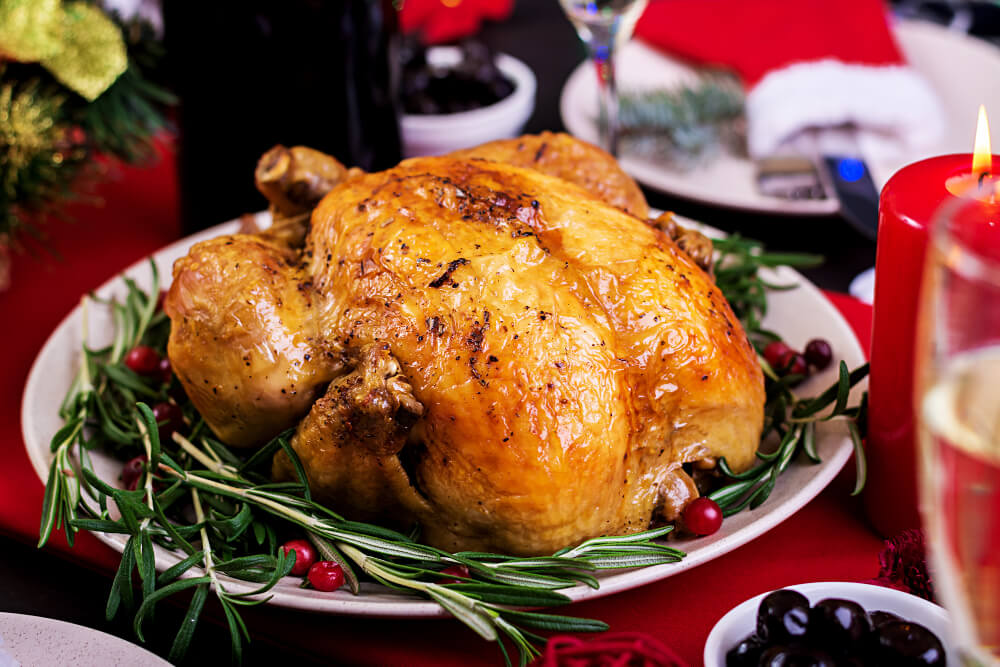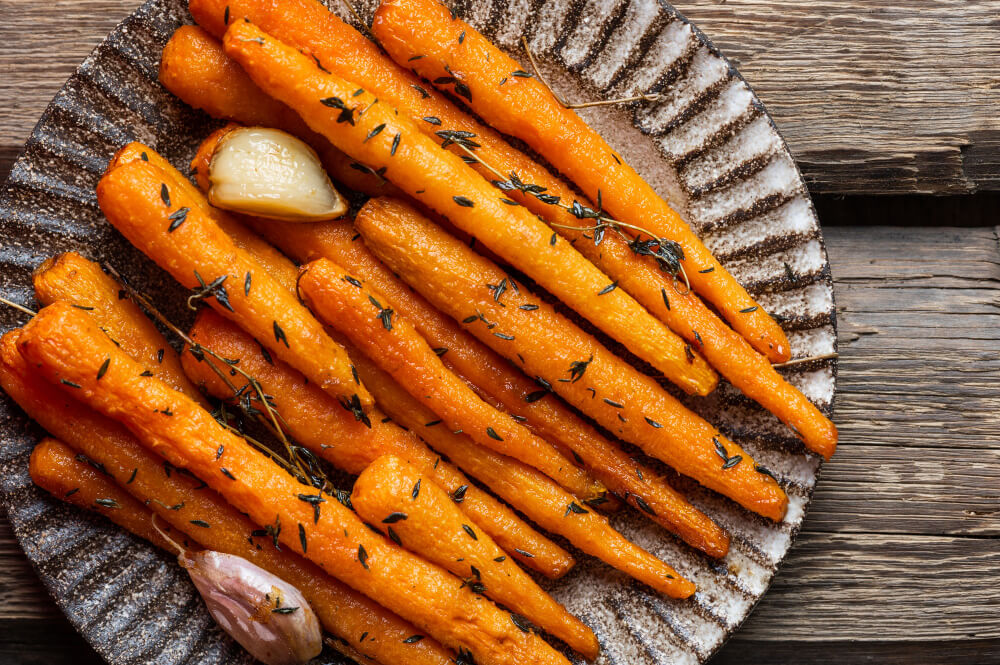 Charcuterie boards have become a popular and delicious way to entertain guests or create a quick and easy meal at home. With their combination of meats, cheeses, crackers, fruits, and vegetables, these boards offer a perfect balance of flavors and textures that make them irresistible to foodies everywhere. In this article, we'll explore the art of charcuterie and show you how to create a stunning board of your own.
Charcuterie boards have become a popular and delicious way to entertain guests or create a quick and easy meal at home. With their combination of meats, cheeses, crackers, fruits, and vegetables, these boards offer a perfect balance of flavors and textures that make them irresistible to foodies everywhere. In this article, we'll explore the art of charcuterie and show you how to create a stunning board of your own.
WHAT IS A CHARCUTERIE BOARD? THE DEFINITION.
A charcuterie board is a platter used to display various foods, arranged artfully for an impressive and delicious presentation. The board can be made from various materials, including wood, marble, slate, or even glass. It can come in different shapes and sizes to suit your needs.
When creating a charcuterie board, it's important to consider the size and shape of the board, as well as the colors and textures of the foods you'll be including. You'll also want to think about the flavors and tastes of each food, and how they will complement each other on the board.
The Art of Charcuterie: A Brief Overview
How to pronounce charcuterie?
The word "charcuterie" is pronounced "shahr-kuh-tuh-ree" in English, it is important to break it down into syllables. The first syllable is pronounced "shahr," followed by "kuh," "tuh," and "ree." The emphasis is placed on the second syllable, "kuh."
Recently, charcuterie (pronounced shar-KOO-tuh-ree) has evolved beyond just meat products. It now includes various foods that can be artfully arranged on a board for an impressive appetizer presentation. This can consist of a variety of meats, cheeses, crackers, fruits, nuts, and dips, creating a symphony of flavors and textures.
Different Types of Charcuterie Boards and When to Use Them
There are many different types of charcuterie boards, each with its own unique style and purpose. Some of the most popular types include:
- The Classic Board - The most popular type of charcuterie board, featuring a selection of meats, cheeses, and a variety of crackers arranged in many ways and shapes.
- The Cheese Board - As the name suggests, this type of board focuses on different types of cheese, including soft cheeses, ranging from brie to hard cheddar and everything in between.
- The Breakfast Board - This board is perfect for a brunch or breakfast gathering and features a selection of breads, pastries, fruits, and spreads.
- The Vegetarian Board - For those who don't eat meat, a vegetarian board can be a delicious and satisfying option, featuring a variety of fruits, vegetables, nuts, and dips.
- The Dessert Board - If you're looking for a sweet and decadent treat, a dessert board can be the perfect way to indulge in your favorite sweets and treats.
How to Make a Gorgeous Charcuterie Board in 6 Easy Steps
Now that we've explored the basics of charcuterie and different board types let's dive into the process of creating your own board. Here are six easy steps to follow:
Step 1: Choose the Perfect Cutting Board
When selecting a best charcuterie board, it's important to consider the size, shape, and materials used. Wood boards are a classic choice and can add a rustic and natural touch to your presentation. Marble or slate boards can provide a sleek and modern look, while glass boards can be a fun and unique option; remember that if you plan to use your knife on the board, anything except wood will dull your blades.
Step 2: Selecting Your Meats
When selecting your meats, it's important to consider a variety of flavors and textures. Some popular options include salami, prosciutto, and chorizo. You may also want to consider including a pâté or terrine for added variety.
Step 3: Picking the Right Cheeses
Like meat selection, various kinds of cheese are key when creating a perfect charcuterie board. Some classic options include brie, cheddar, and gouda, but be bold and try different types of cheese like blue cheese or feta. Also, consider including both soft and hard cheeses for added texture and flavor.
Step 4: Add Crackers and Breads for Texture and Flavor
Add some crunch and variety to your board, including crackers and slices of bread. Choose options like baguette slices, crostini, or crackers in various flavors, such as rosemary, garlic, or black pepper and place them nicely around the board.
Step 5: Choosing the Best Fruits and Vegetables
Fresh fruits & dried fruits as well as vegetables add color, texture, and flavor to your board. Consider including various options, such as grapes, sliced apples or pears, berries, raspberry, figs, carrots, and cherry tomatoes. Choose fruits and vegetables in season for the best flavor and texture.
Step 6: Adding Nuts, Dips, and Other Extras
Consider adding additional items like nuts, spreads, and dips to round out your board. Almonds, cashews, and pistachios are popular choices for nuts. At the same time, hummus, tapenade, dill pickles and mustard can add some extra flavor and accompaniment to your board.
Serving and Presenting Your Charcuterie Board
Now that you've created your charcuterie board, it's time to present it artfully and impressively. Here are a few tips for arranging your board to impress your guests:
- Start by placing your larger items, such as cheeses and meats, on the board first.
- Then, add your crackers around the edges, creating a border around the larger items.
- Fill the spaces between the larger items with your fruits, vegetables, and nuts.
- Add height and visual interest by stacking items or arranging them in a pyramid shape.
- Consider adding small bowls or ramekins for dips and spreads.
How to Pair Your Board with the Perfect Wine and Beverages
 No charcuterie board is complete without the perfect wine or beverage to accompany it. Here are some popular options for pairing with your board:
No charcuterie board is complete without the perfect wine or beverage to accompany it. Here are some popular options for pairing with your board:
- Red Wine - A bold red wine, such as Cabernet Sauvignon or Syrah, pairs well with cured meat and cheeses.
- White Wine - A crisp white wine, such as Sauvignon Blanc or Chardonnay, pairs well with lighter cheeses and fruits.
- Beer - A light and refreshing beer, such as a pilsner or lager, pairs well with salty meats and nuts.
- Cocktails - Aperol spritzes, gin, and tonics can be a refreshing option to pair with your board.
Frequently Asked Questions about Charcuterie Boards
Here are some answers to common questions about charcuterie boards:
What's the Difference Between a Charcuterie Board and a Cheese Board?
While a cheese board focuses solely on different types of cheese, a charcuterie board includes a variety of meats, cheeses, and other foods.
How Do I Make a Vegetarian or Vegan Charcuterie Board?
Replace meats with vegan charcuterie options like tempeh or seitan and include a variety of fruits, vegetables, and nuts.
Can I Make a Charcuterie Board in Advance?
Yes, most items can be prepared in advance and stored in the refrigerator until ready to serve.
How Much Food Do I Need for a Charcuterie Board?
Plan for around 2-3 ounces of meat and cheese per person. Add additional items like fruits, vegetables, and crackers for variety.
What are Some Fun and Creative Charcuterie Boards Ideas?
Themed charcuterie boards can be a fun and creative way to add some personality and flair to your board. Here are a few ideas to get you started:
- Brunch Board - Create a board with breakfast items like waffles, bacon, eggs, and bagels.
- Holiday Board - Celebrate a holiday by incorporating themed items like candy canes or pumpkin pie.
- Regional Board - Create a board that celebrates a specific region, like a Mediterranean board with hummus,
olives , and feta cheese. - Color Board - Choose items that all have a specific color, like a board with all pink foods, for a unique and visually striking presentation.
Conclusion: The Art of Charcuterie is Yours to Master
Charcuterie boards are a versatile and delicious way to entertain guests or create a satisfying meal at home. With a little creativity and some careful planning, you can create a stunning board that will impress your guests and satisfies your cravings.
Remember to consider a variety of flavors and textures when selecting your meats, cheeses, and other items, and don't be afraid to experiment with different types of boards and themes. With these tips and tricks, you'll be well on your way to mastering the art of charcuterie.




